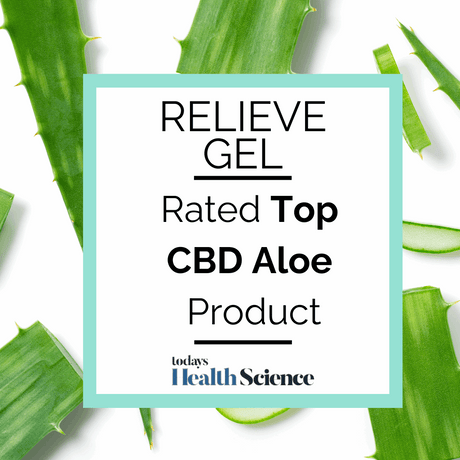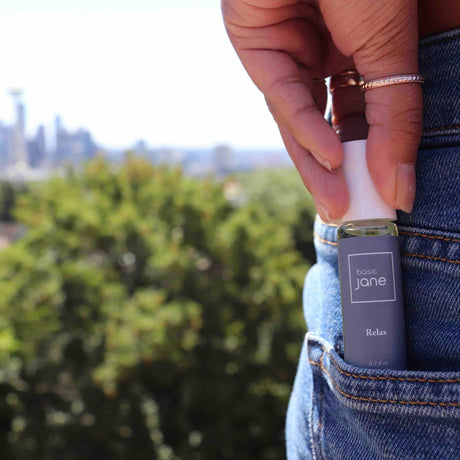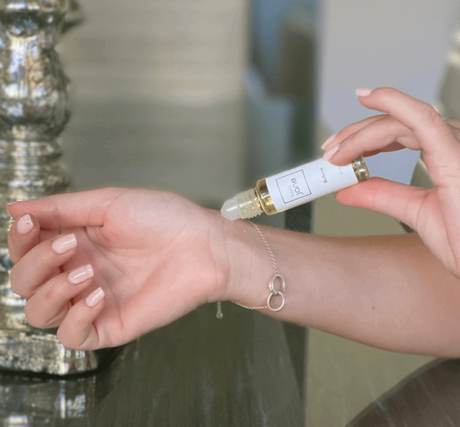Jessica Tonani, CEO, Verda Bio:
Jessica Tonani, CEO, Verda Bio.
Verda Bio is an agricultural biosciences company specializing in cannabis research. Utilizing a proprietary plant library, genomic tools, and metabolite analysis, its mission is to create unique cannabinoid-based products for the consumer and medical markets. As a previous medical cannabis patient, Jessica Tonani launched Vera Bio with the goal of advancing clinical research so patients could have access to information you typically receive with other medications, such as proper dosage, side effects, and the risks/rewards.
Q: Can you discuss your plant breeding program of focusing on male plants/seeds and the plant library?
A: Cannabis is a pretty interesting species in that it has males and females and they reproduce, but the females can reproduce themselves. There’s two ways to breed cannabis, and we do both. Most of the cannabis industry is focused on female flowers. So, we’re unique in that we grow males and reproduce with our females. We’re producing plants that in general have unique profiles that may not have broad appeal in the recreational market—we have some plants with THC, but not a lot. Most our plants have compounds like CBD, that have wellness or pharmaceutical applications.
Q: What sort of analytical chemistry technology and data are you utilizing to progress your research?
A: The cannabis plant is interesting if you look at it, you can’t really tell what it’s going to make. One of the things we do is look at it from an analytical perspective—what other plants produce these chemicals? We use a variety of technologies, like old school chromatography to more advanced in-depth chromatography. The goal is to figure out what chemicals the plants are making.
We’ve gotten deeper into genomic work on the plant, and have done a couple whole genomes that we released publicly. The second thing we’ve done is cannabis microbiomes. One of the issues in cannabis is there’s a lot of repeat regions in the genes that matter, but are “sloppy” from a genomics perspective. We’re still trying to come up with the general tools that we believe are good enough that can make the same answers that our analytical chemistry can now, which we believe it will get there—we’re not the only group working on it, and we collaborate with a number of others. But right now, if you want to know a plant will produce TCHA versus CBD, the cleanest way to do that is from an analytical chemical perspective. We can actually do that from a very young plant because the ratios of those compounds stay exactly the same throughout the life of the plant. We can tag those at an early stage.
Q: What sort of therapeutics are you developing? What diseases are you focusing on?
A: Our initial product is a hemp-based topical cream for pain relief with CBD. CBD has a number of studies around it regarding decreased inflammation and pain. We’re moving toward products around palliative applications—nausea, pain—especially with the current opioid crisis. CBD has much better potential pain relief with lower addictive profiles, may be much more safe, and oftentimes there’s no adverse effects like constipation.
Q: Can you walk me through what the process was like to become the first in your state to earn the first cannabis research license?
A: The state didn’t have a license system when we started, so we worked with representative to get a system established. The state was very open to cannabis research and that we should be doing it, but they felt it was against the law, which it was. So, we had to jump through hurdles from a legislative and move-making perspective to get even a system in place so we could apply, and that took about three years. The next step was for us to apply, and the application is a little bit more strict than a standard license for growing or processing marijuana in the state of Washington. What we needed to do from our license perspective was to put a scientific proposal together, which goes to an independent review board, who decides if what we want to do is scientifically relevant. We have pretty large buckets for research in the state of Washington (e.g., genomics, analytical, clinical), but that research does have to be approved. Once you pass that, you still have all the rules and regulations associated with having a marijuana facility. So, for example, the room I’m sitting in now has three cameras pointing at it, and we have two cameras pointing outdoors into the next room. We are equipped with cameras, alarms, and every plant is tracked and tagged.
Q: How do you see the cannabis science industry evolving as regulations change?
A: I think it’s going to be like a bubble bursting. There are so many unique compounds in this plant and they have so many different applications—anything from antimicrobials and new antibiotics to potential growth regulations of other plants. There’s going to be an explosion of relevant compounds that come out of this plant for a variety of applications. I also think that we’re going to see better growing practices, more acreage come out of this plant, explosion of research, as well as an explosion of commercial products coming out on the backend that will range from textiles to pharma agents.
Q: What emerging technologies and trends are you seeing in the cannabis space?
A: There’s definitely an explosion of artificial intelligence in the agricultural world and I think big data will play into this. And what I’m seeing with big data is really on better ways to grow the plant.
S
Dr. Jonathan Vaught, CEO, Front Range Biosciences:
Dr. Jonathan Vaught, CEO, Front Range Biosciences.
Front Range Biosciences is an agricultural biotech company that specializes in tissue culture propagation and breeding of high-value crops at industrial scale to improve consistency and efficiency for clone and seed production. FRB developed the first Clean Stock® program for cannabis and hemp and has an advanced breeding program for identifying and improving commercially relevant traits. Dr. Vaught is responsible for driving the company strategy and vision, research and development, decision-making, public relations, and managing key industry relationships. Prior to becoming CEO of Front Range Biosciences (FRB), he was involved in molecular diagnostics.
Q: What are some of the top questions regarding cannabis strains and plant breeding that Front Range Biosciences is trying to answer?
A: We are interested in answering a wide variety of questions around plant breeding with regards to cannabis. Minor cannabinoid production is one of the most exciting areas. We think there are many more important compounds in this plant besides THC and CBD that are going to be incredibly valuable. We are working on the agronomic side as well because we believe there are many important traits that can be bred into this plant. These specific traits would make it a crop that can be grown in a wide variety of climates.
Q: Can you discuss the types of facilities Front Range Biosciences operates in Colorado, California, and Wisconsin?
A: We have several different types of facilities, including tissue culture laboratories, greenhouses, biochemical and analytical chemistry laboratories, distribution and shipping facilities, and breeding facilities. Each facility has specific equipment and functions based on company objectives. Many of our facilities also serve several purposes; for example, our greenhouses mostly serve as stock and vegetative cutting production centers, but they can also be used for specific types of research trials for the nursery. We typically have some combination of both research and production in each of our facilities depending on the time of year.
Q: What do you think are the main challenges right now in the cannabis science/research industry?
A: One of the biggest challenges in the cannabis science and research industry is the uncertainty of a changing regulatory environment. The prohibition placed on cannabis has had a lasting impact, limiting the ability for companies and academic institutions to effectively drive research programs and making it unnecessarily difficult to obtain funding. Cannabis is one of the most interesting and productive crops in history with applications in human health, plant-based nutrition, and sustainable industrial fibers. The major compounds found in cannabis are some of the safest, especially when compared to compounds like alcohol and caffeine, which can cause serious health problems and even death when taken in high doses. From the scientific perspective, the prohibition on cannabis is unwarranted.
Q: How do you see the cannabis science industry evolving as regulations change?
A: I think we are going to see legalization continue to spread around the globe. There will be ups and downs as the regulatory agencies try to keep up with market conditions. Regulations will be both overreaching and also underregulated, or deregulated, as the science and industry matures. We will see the FDA and USDA continue to get more involved, which will have benefits for the industry as a whole, but will also present challenges and growing pains.
Q: Can you explain the complexities or challenges when evaluating a cannabis plant’s molecular profile?
A: It depends on what is meant by molecular profile since there are several different types of molecules. First, there are biomolecules like DNA/RNA, which are evaluated by sequencing and bioinformatics or genomics approaches. We have made a lot of progress in evaluating the cannabis genomic profile; however, genomics is complex and there is still a lot of work to do. Then, there are proteins, which can be quite complicated to profile, but are important for understanding how the plant works. There are many challenges here as the profiling process can be expensive and technically challenging, so there has been limited research done in cannabis proteomics. Third, there are small molecules, or secondary metabolites, which are probably the most interesting to researchers. These are the cannabinoids, terpenes, flavonoids, and other compounds that have commercial value. This is an area that is driven by analytical chemistry, which is where the most progress has been made in terms of molecular profiling. We easily detect and quantify a few of the cannabinoids and terpenes regularly, such as CBD and THC, however, there are hundreds of additional molecules that are produced in small quantities and not readily detected. This represents one of the most exciting areas of cannabis research as many of these compounds could have significant value to the medical community.
Q: What methods, techniques, or other aspects of Front Range Biosciences do you believe makes it unique?
A: FRB is unique in several ways as we have developed two very important platform technologies for the improvement of cannabis and hemp crops. Our Clean Stock® program, which leverages tissue culture to provide the highest quality disease-free plants, is the first of its kind in the cannabis industry and is setting the standard for how we clone or vegetatively propagate this plant. Using genomics, bioinformatics, analytical chemistry, and field data collection, our scientifically-driven breeding program allows us to breed new and valuable traits into the crop. This allows farmers in a wide variety of climates to generate significant returns on the multitude of products that can be harvested from cannabis. We are a company driven by innovation. We are not only trying to create exciting new products, but also increase the industry knowledge around farming this new crop in order to support industry growth here in the US as well as abroad.
Q: What emerging technologies and trends are you seeing in the cannabis space (AI, machine learning, big data, etc.)?
A: We see similar trends in cannabis as in other industries. All of the trends mentioned are showing up in different parts of the industry. Data is one of the biggest areas, since the industry is so highly regulated. The ability to create reliable channels for incoming/outgoing data is important in order to balance regulation with rapidly growing new markets. We are also seeing major shifts in how cannabis is produced and its ingredients harvested for new and exciting product categories such as edibles. Specialized equipment and processes are making it possible to create innovations that represent increased levels of consumer safety and reliability. This is opening the door for new products to reach consumers in important categories such as the health and wellness space.



















